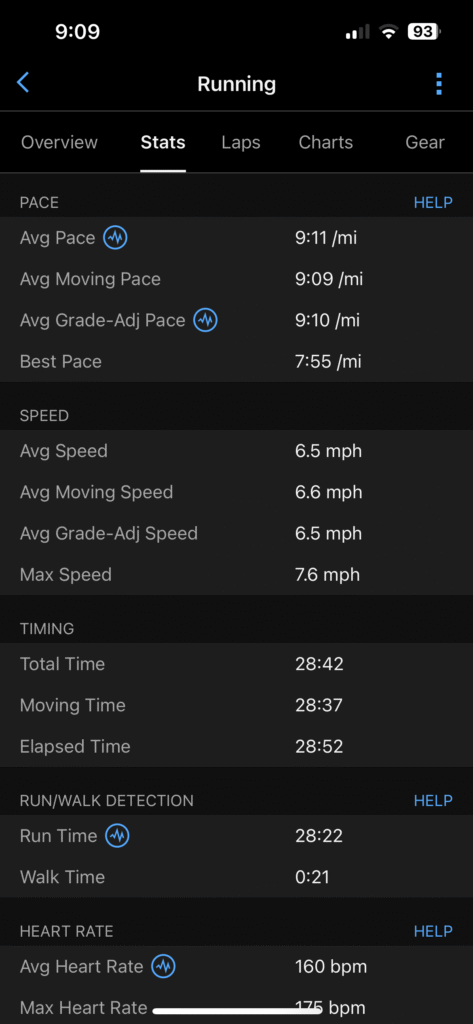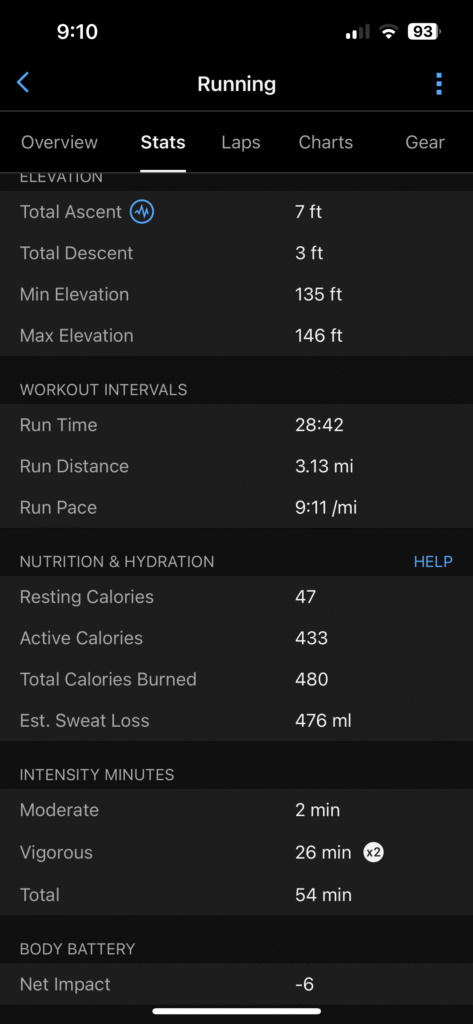This post may contain affiliate links. If you click on one of these links and make a purchase, I may earn a small commission at no extra cost to you. I only recommend products I personally use, trust, and believe can bring value to your training journey. Thank you for supporting this blog—it helps keep the content free and running!
If you stay consistent on your running journey, eventually you’ll start wondering: “Do I need a fitness watch to better track my workouts?” You might notice that a lot of runners wear either an Apple Watch or a Garmin—and the question becomes, which one is right for you?
When you search for Garmin watches, you’ll see a wide range of models and prices. It can get overwhelming, especially if you’re not sure what features you actually need.
My Journey: From Apple Watch to Garmin
I’ve been there myself. I started with an Apple Watch SE and later upgraded to a Garmin Forerunner 265—and I absolutely love it. Here’s how I made that decision and why I believe the Forerunner 265 is a game-changer for runners.
Starting Out with a Running App
In the beginning, I used a running app on my phone. I either held the phone or kept it in my pocket. It did the basics—tracked distance, pace, and location. But I was ready for more. I wanted more detailed data to see where I could improve and accurately track my progress over time.
Testing the Apple Watch
Luckily, my wife had an Apple Watch she wasn’t using, so I gave it a try for three weeks. The experience was smooth. It’s sleek, comfortable, and integrates perfectly with the iPhone. I could reply to texts, answer calls, and even snap pictures using my phone’s camera—all from my wrist. The Apple Watch tracked sleep, steps, and heart rate—everything I needed in the early stages.
To summarize, the Apple Watch is a smartwatch with fitness features. It’s an excellent option for iPhone users who want a seamless, all-in-one device.
Why I Switched to Garmin
As I got more serious about running, I started researching Garmin watches. I narrowed it down to a few models that fit my budget: the Forerunner 55, 165, and 265. Thanks to a Garmin promotion, I was able to score the Forerunner 265 for around $350—about $100 off.
Each Forerunner model has its strengths, and the higher the model number, the more advanced the features. For me, the 265 was the sweet spot—great features without breaking the bank.
What Makes the Garmin Forerunner 265 Stand Out?
Here’s what makes the Forerunner 265 worth considering for beginner to intermediate runners who are serious about their progress:
🔁 Multiband GPS for Superior Accuracy
Unlike standard GPS, the 265 uses multiband GPS and GNSS support (GPS, GLONASS, Galileo) for pinpoint accuracy—even in tough environments like urban areas or forest trails.
🏃 Advanced Running Dynamics


It tracks a full suite of metrics:
- Stride length
- Ground contact time
- Vertical oscillation
- Running power (with accessories)
- Cadence and pace
This data gives insight into your form and efficiency, helping prevent injury and improve performance.
🔋 Insane Battery Life
Up to 13 days in smartwatch mode, and up to 20 hours in GPS mode. Compared to an Apple Watch that often needs daily charging, this is a major win for runners.
💡 Bright AMOLED Touchscreen
The AMOLED display is bright and vibrant, even in direct sunlight. It’s protected by Corning Gorilla Glass 3, making it scratch-resistant and durable.
💤 Better Sleep and Recovery Insights
- Tracks light, deep, and REM sleep stages
- Measures HRV (Heart Rate Variability) to monitor recovery
- Includes a Morning Report showing your sleep, recovery score, and training readiness
- Body Battery™ shows how much energy you’ve recovered overnight
🎶 Music Storage & Playback
You can store up to 500 songs on the watch or sync playlists from Spotify, Amazon Music, or Deezer. No phone needed during runs—just pair with Bluetooth headphones.
💳 Garmin Pay
Contactless payments right from your wrist. Leave your wallet at home and still grab coffee after your run.
📊 Race Predictor & Training Readiness
The Forerunner 265 provides:
- Race predictors for 5K, 10K, half, and full marathon based on your current fitness
- A Training Readiness score combining sleep, recovery, stress, and more to help guide daily workouts
🧘 Multisport Tracking
Beyond running, the 265 tracks:
- Triathlon, cycling, swimming
- Yoga, HIIT, strength training
- Team sports, snowboarding, rowing, and more
🧠 Personalized Adaptive Training Plans
The Garmin Coach feature builds plans for 5K, 10K, and half marathon distances based on your fitness level and progress. It adapts as you go to keep your training balanced and optimized.
📱 Smart Notifications & Safety Features
- Receive text, email, and app notifications
- Incident detection and live tracking (with a paired phone), so your loved ones can follow your runs for safety
Final Thoughts
The Apple Watch is a great device for everyday use with solid fitness tracking. But if you’re looking for a fitness-first watch that prioritizes performance, data, and recovery, the Garmin Forerunner 265 delivers on all fronts.
Everyone has different goals and budgets, but if you’re focused on improving your performance, avoiding injury, and staying consistent, the 265 is an excellent investment. It’s not just a watch—it’s like a personal coach, data lab, and motivator on your wrist.
I personally use and recommend the Garmin Forerunner 265 because it’s helped me level up my training and stay consistent with my goals.
👉 If you’re ready to take your running to the next level, check out the Garmin Forerunner 265 on Amazon here or through Garmin’s official store. I may earn a small commission—at no extra cost to you—which helps support this blog and keep helpful content like this coming.
